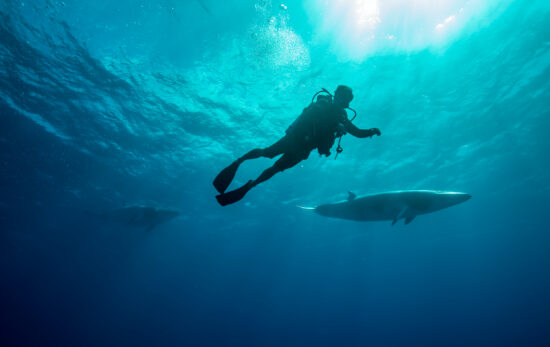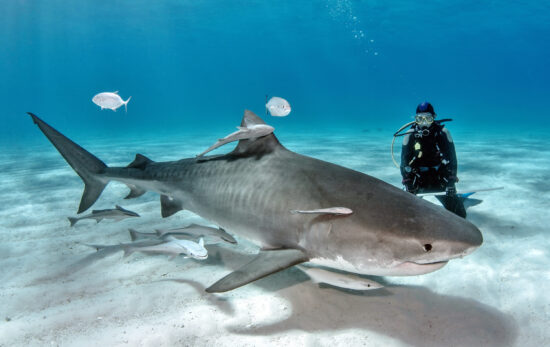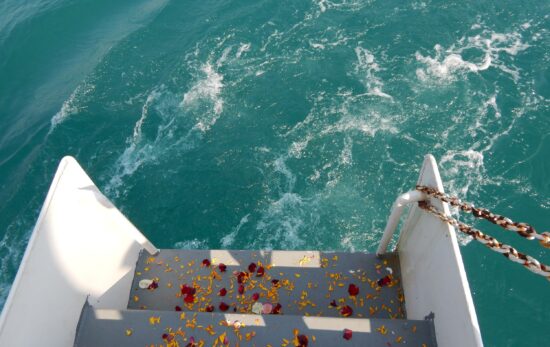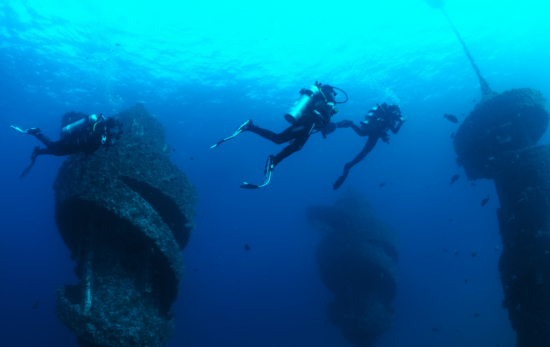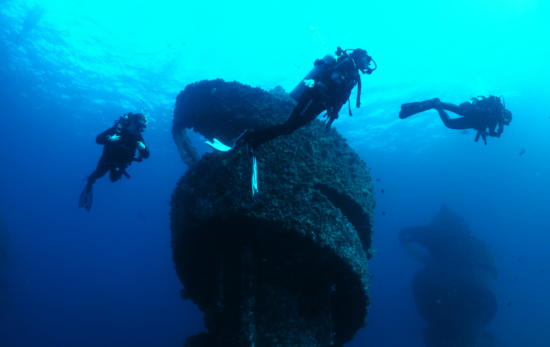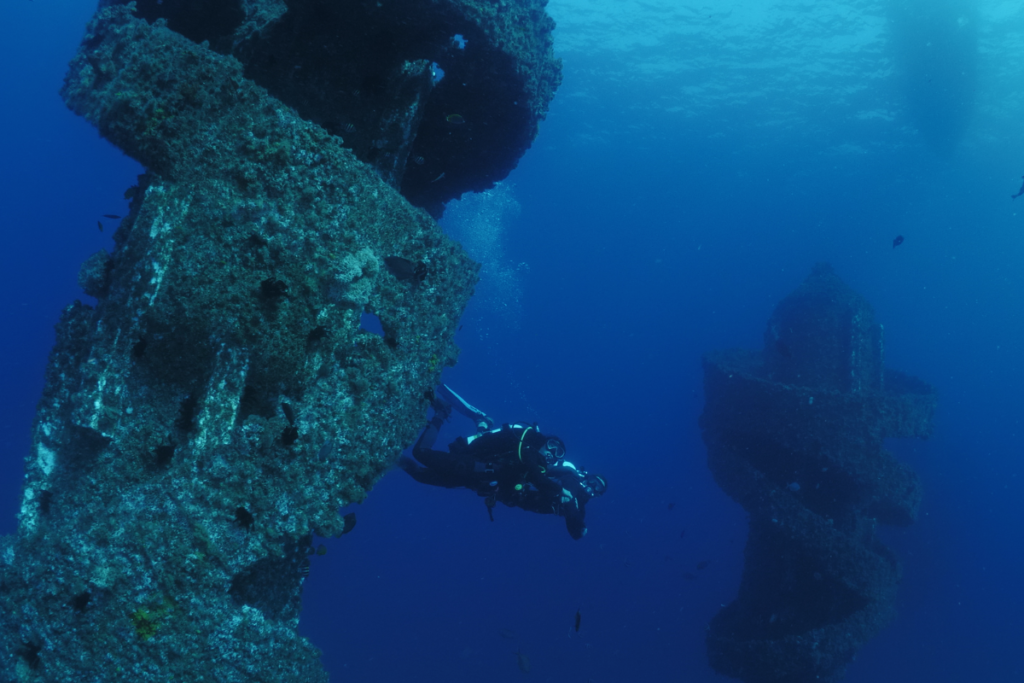
When I chatted with Jack Cavazzini he had barely dried off from making two dives on Australia’s Wonder Reef, the world’s first purpose-built buoyant reef that was installed in August 2021 and opened to divers 10 months later. “It’s the first artificial reef of its type,” he says. “The concept and the installation hasn’t been done anywhere else. That’s pretty cool.”
“I was lucky enough to dive it twice,” says Cavazzini. “The second time was with the Gold Coast mayor [Tom Tate]. It was his inspiration and vision, so it was nice to share it with him and get his perspective. You could see the Gold Coast high-rises in the background. If you haven’t seen that from the water, it is very special. You’ve got the high-rise buildings on the beach with the hinterland behind it, so it’s very pretty.”
As gorgeous as the topside view of the City of Gold Coast is (a place world-renowned for its stunning beaches, skyline, waterfalls and rainforest), Wonder Reef impressed Cavazzini even more. The artificial reef is massive and takes up 1,130,069 cubic feet/32,000 cubic meters of reef habitat. Each of the nine floating “flute” structures that comprise the reef weigh 846 tonnes — 1.8 million pounds — in air. Each reef foundation weighs 159,000 pounds/72 tonnes. Roughly 2,200 pounds/1 tonne of chain, shackles and swivels connect each floating flute to a foundation reef.
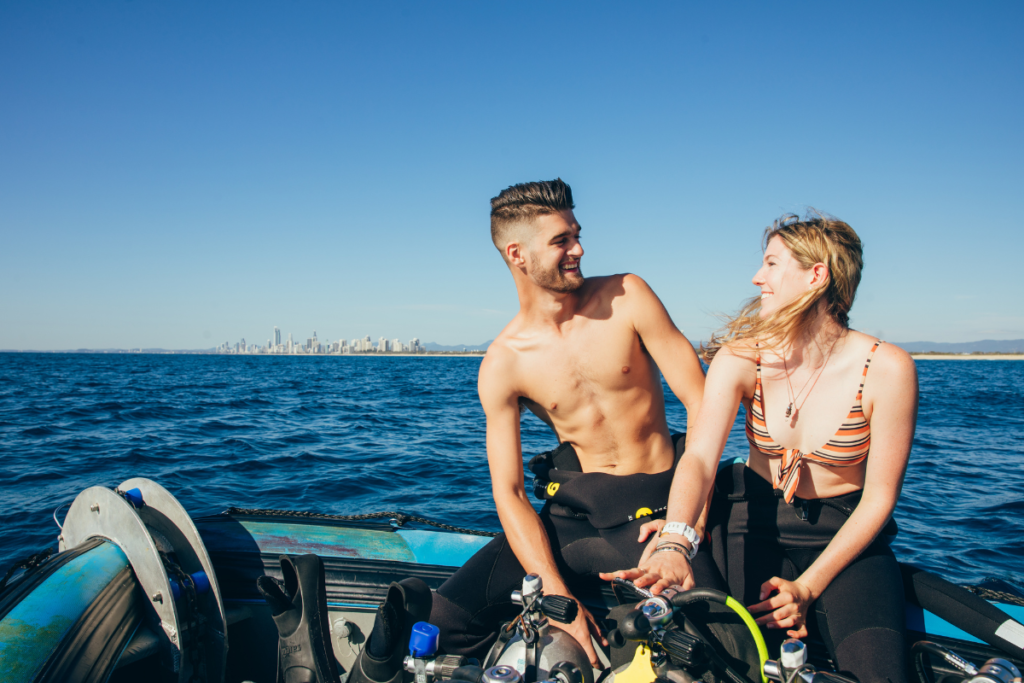
The Dive Briefing
“When you do any dive, you do a little bit of research to find out what it is,” says Cavazzini, who is a Regional Training Consultant with PADI Asia Pacific and a PADI Master Instructor with over 20 years of experience in the diving industry. “The concept for me is pretty interesting. You have these 22-meter (72-foot) high structures coming from the seafloor — these giant metal pyramids anchored to the bottom just by the weight of the concrete blocks they’re on. And then there are the buoyant structures above that floating. We were lucky that we could see all nine structures at once, which was impressive. It’s exciting to see.”
Starting at the top, each structure has a cylindrical part, the “flute,” with metal protrusions swirling around. “This part has swim-throughs for divers, which were designed as built-in creature habitats,” he says. “There’s a large chain that anchors the structure to the bottom to the large pyramid, which is another feature for divers. The inspiration for it was hot-air balloons and a kelp forest. You really get that feeling when you’re down there.”
Large-scale sculptural artist Daniel Templeman wanted to create something that could not only withstand cyclonic conditions in the Pacific Ocean but at the same time appear to be light and buoyant. The design team was Inspired by the concept of hot air balloons rising in the sky. In addition, engineers designed it so that the reef flutes sway like kelp. The movement is what oxygenates the algae on the reef and provides nutrients to the corals, which in turn attracts sea life to feed from them.
From the bottom, you could see all nine structures swaying like kelp,” says Cavazzini. “Normally, you’d think you’d move backward and forward with the object, but they have their own rhythm. It’s very pretty.”
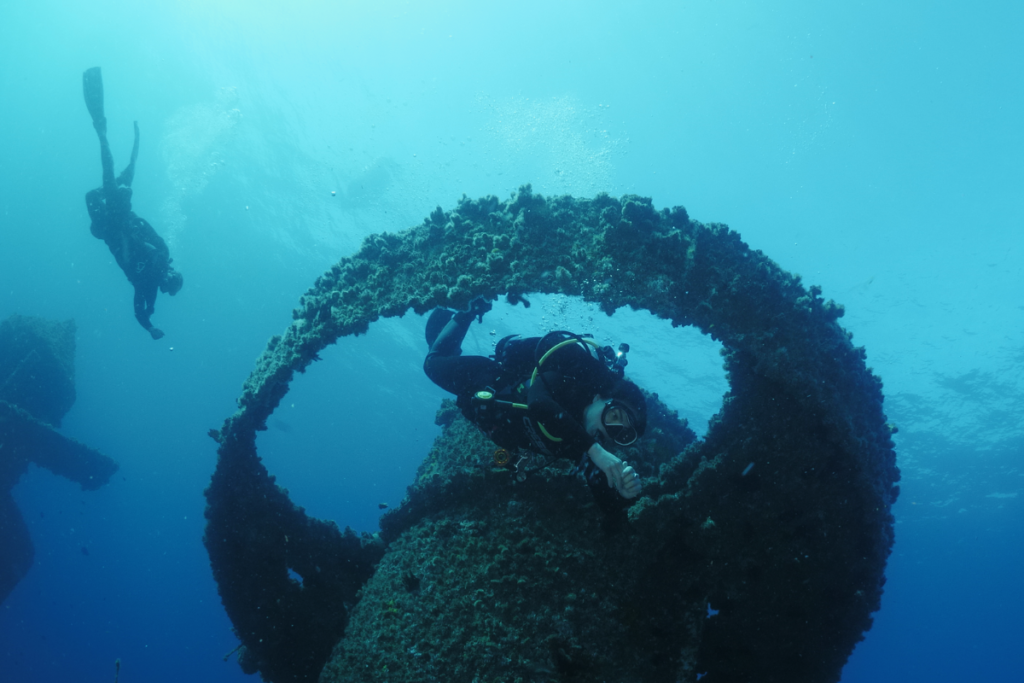
The Marine Life Stars of the Show
Divers from beginning Open Water to Advanced Open Water can dive the site. “It hasn’t been down that long in the great scheme of things, but a structure like this is always going to attract a large amount of fish,” says Cavazzini. “We saw large schools of what we call mack tuna [mackerel tuna] hunting baitfish. Plenty of batfish floating around as well. Within the structures, and you look within, there’s lots of crayfish and octopus and plenty of small creatures in the little holes. Deeper, there are giant Queensland grouper. They’re quite large and pretty friendly, and they get quite close. Plenty of lionfish hanging around the pyramids. On the sandy bottom, you might find eagle rays.”
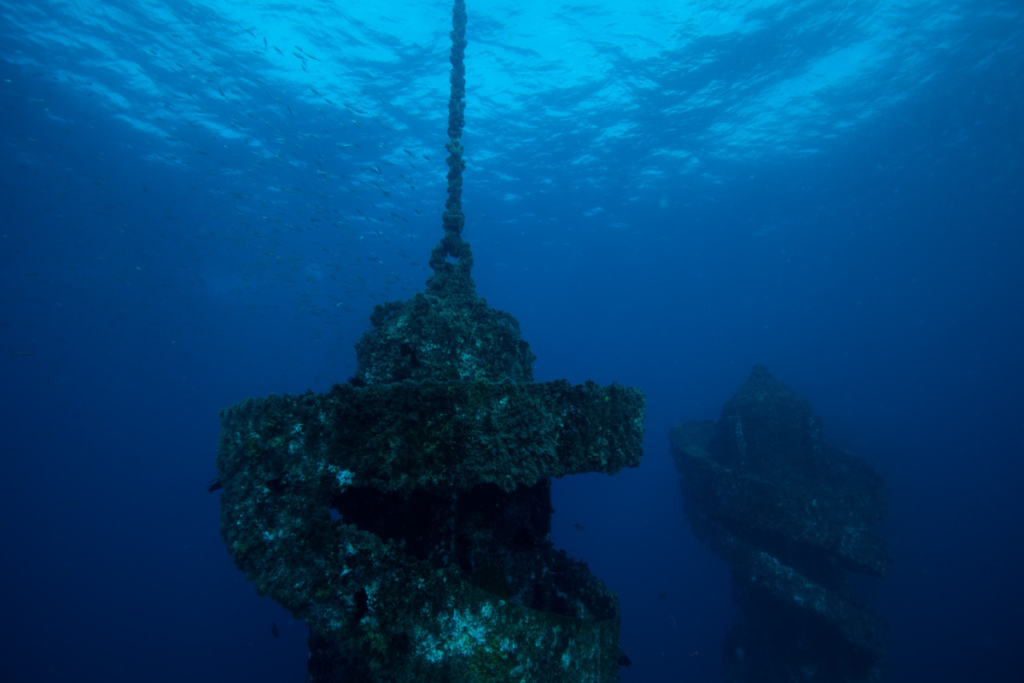
What It Means to the Gold Coast
The reef is the most recent addition to the Gold Coast Dive Trail, a series of 11 diverse dive sites between South Stradbroke Island and just south of Snapper Rocks. The sites include the Scottish Prince wreck and natural reefs such as Palm Beach, Kirra and Nine Mile.
Originally, Cavazzini says, Gold Coast Mayor Tom Tate tried to secure a naval vessel to purpose-sink off the city, but those plans fell through, and plans for creating a massive sculptural artificial reef began.
Good friends of Cavazzini’s were involved in the early stages of the project, and he says it’s been the perfect boost for the Gold Coast diving community.
“Coming out of Covid and a strange two years, this has been very exciting,” he says. “It’s so close to shore, so accessible. It’s a $5million project. A huge amount of resources have been poured into this project, and it’s such an asset to the dive industry. There’s really something for everybody, whether you’re taking divers for pleasure or you’re using it for training. It’s about to open up to free-diving operations as well. It’s just a perfect site for all those things.”
Regular dive tours are operated by Gold Coast Dive Adventures and the Queensland Scuba Diving Company.
